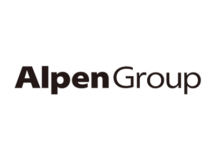タイを拠点とし、30か国以上で多角的に事業を展開する製薬会社Mega Lifesciencesでは、各国拠点がそれぞれ独自のマーケティング予算策定手法を長年にわたり構築してきました。こうした状況を組織全体で標準化し、より深いインサイトを活用してプロセスを高度化するため、同社はマーケティングパフォーマンス管理の統合的なアプローチを実現すべく、Board Intelligent Planning Platformを採用しました。
現在導入フェーズにある中で、Mega Lifesciencesは各ブランドにおけるマーケティング予算策定プロセスを、戦略的かつドライバー主導のインサイトに基づいて変革しようとしています。
Mega Lifesciences(Mega)は、1982年の創業以来、何百万人もの人々に安全で効果的な世界水準の医薬品へのアクセスを提供してきました。同社は、開発途上国におけるヘルス&ウェルネス分野のリーディングカンパニーであり、その事業の80%以上がタイ、ミャンマー、ベトナム、カンボジア、マレーシア、ナイジェリアに集中しています。
Megaは、Mega We Care™ブランドのもとで、ニュートラシューティカル製品、処方薬、一般用医薬品(OTC)の開発、製造、マーケティング、販売を行っています。また、Maxxcare™という流通部門も有しており、処方薬、OTC製品、FMCG(消費財)を対象に、マーケティング・販売・流通を手がけています。
課題 — 多岐にわたるマーケティング要件(予算編成・計画・分析・レポーティング)に対応するソリューションの模索
Megaのマーケティング予算策定プロセスでは、主に「マーケティング年間計画」と「ブランド年間計画」という2つの主要なドキュメントが用いられます。これらの計画には、数値と関連付けられた定性的な要素も含まれており、マーケティング計画の一環として記録されます。「予算策定前(プレ・バジェッティング)」フェーズでは、Megaが展開する各ブランドを「廃止(Eliminate)」「維持(Maintain)」「強化(Raise)」「新規創出(Create)」の4つのカテゴリのいずれかに分類します。
“While Raise is more incremental, Create might be more of a paradigm shift,” explains Arun Singh, CIO at Mega Lifesciences. “Anything in the Eliminate or Maintain category, you know your marketing campaigns and spend has to be within the check. For Raise or Create brands, you can be more aggressive with the spend. Once these high level strategies have been defined for each brand, there is a check on the numbers that follow. Do they fall in line with the categorization, or not? It doesn’t make sense that you plan to Eliminate a brand but you are increasing the marketing spend by 50%. Having this qualitative aspect captured, along with the numbers, gives you that overall perspective and you know there is a rationale behind the numbers you are entering.”
同社はマーケティングパフォーマンス管理のあるべき姿について明確なビジョンを持っているものの、30か国にまたがる多様な事業を展開しており、それぞれの国で独自のアプローチが構築されていました。2か国では旧式のソフトウェアソリューションを使用し、それ以外の国ではExcelが使用されていました。過去に、マーケティング予算策定ソリューションを全拠点に展開して標準化を図る取り組みが行われましたが、開発途上国における不安定なインターネット接続に対応するためのハイブリッド型アプローチをサポートできなかったため、導入は困難を極めました。さらに、そのシステムはドライバーに基づいた計画策定というよりも、単なるデータ入力用のツールであったため、ユーザーは従来の業務より後退したように感じていました。
この経験は、Arun氏とそのチームに対し、自社がマーケティング予算策定システムに本当に求めているものへの気づきをもたらしました。Arun氏は次のように語っています:
“We failed, but we learned. We learned we needed an intuitive system, an offline system, a cloud-based system that is optimized for internet-based access, a system that takes care of both quantitative as well as qualitative aspects, and one platform for the entire range of marketing processes. We also realized we needed to provide users with something very intuitive, to give that Excel-like experience, but also ensure automation and integrity, and reduce, rather than increase, their work.”
Arun氏のチームが主導したビジネスインテリジェンス(BI)プロジェクトにより、自社のソフトウェア要件に対するさらなる洞察が得られました。マーケティングデータを可視化するためにスタンドアロンのBIツールを導入したところ、マーケティング予算策定や予測をプロセスに効果的に統合するためには、より拡張的な機能が必要であることが明らかになりました。このベンダーは、予算編成や書き戻し機能の実装を外部パートナーに依存していましたが、プランニング面における統合性とサポート体制が不十分だったため、BI分野での成功を再現することはできませんでした。
この時点でArun氏のチームは多くの知見を得ていたものの、「マーケティング予算策定・計画・分析・戦略管理」をすべて統合できるソリューションが何なのかを、まだ模索している段階でした。
“We had sky-high expectations,” Arun continues, “We are very inquisitive, and our users are also very demanding. We had been learning and taking note of all of these requirements, so we knew the problem very well, and, eventually, we were able to give a name to this beast that we are trying to tame. That beast is called Enterprise Performance Management (EPM). It was such a relief when we discovered there was a type of solution that would address our needs.”
ソリューション ー マーケティングパフォーマンス管理と分析を実現する単一プラットフォーム
必要なソリューションの方向性が明確になったことで、Arun氏のチームはEPM市場でのリサーチを開始しました。複数の選択肢を検討したものの、戦略・財務・業務の各要素を効果的に統合できるソリューションを見つけることが課題となっていました。
“Then, we received an invitation to a Board seminar in Thailand. Our team went there and came back with a brochure. One day, I had the problem clear in my mind, and when I started going through the brochure, I could see all my check boxes being ticked,” says Arun.
MegaのチームはBoardのシンガポールオフィスに連絡を取り、自社データを活用したPoC(概念実証)を実施することになりました。
“The team did a very good job of creating the initial Proof of Concept, which was given to us free of charge. The quality of the job that was done was very impressive, including the amount of detail and attention the team brought to the table. They were really stepping into our shoes. The Proof of Concept was well-received by all our stakeholders, and that’s how we decided to engage in the next step,” Arun continues.
導入 ー マーケティングパフォーマンスの360度可視化と、完全統合型マーケティング計画の実現に向けた段階的アプローチ
現在、MegaはBoardの導入フェーズにあり、本プロジェクトを3つの主要なステージに分けて段階的に進めています。Arun氏は次のように説明します。
“Phase 1 is about getting the marketing budgeting numbers. Phase 2 is getting the marketing strategy. Phase 3 is starting to get all the marketing analytics we want to bring in. For any particular brand, we want a 360° analysis of what the numbers are, what the strategies behind them are, and then advanced analytics for those brands. Everything in one single platform. That’s the objective. A marketing planning and analysis platform. Board doesn’t only do budgeting, it’s also a BI tool. That’s the end game for us.”
フェーズ1:マーケティング予算策定
Boardプロジェクトの第1フェーズでは、より柔軟性の高いマーケティング予算策定ソリューションの提供に重点を置きます。これは、SKUレベルでの詳細な作業しかできなかったMegaの旧システムの制約を克服することを目的としています。
“One size does not fit all,” says Arun. “Some countries would rather budget at a brand level, or initialize at the category level first, starting from macro level and going down to micro level. With Board, we are in the process of building this. We have been able to identify multiple templates, so you are not restricted. If you want to do budgeting at brand level, you use the brand template. If you want to do it at the SKU level, you use the SKU template. If you want to do your budgeting with the quantity first, and you want the value to be calculated, then do it with the quantity. We’re building a whole pricing model in Board, where, if you enter your quantity budget, your value will be calculated. Another country might be more comfortable performing a value exercise, and in this situation, the quantity is automatically calculated, based on the pricing. So you have all these different possible combinations.”
フェーズ2 ー マーケティング戦略管理
マーケティング予算策定の基盤が整った後は、Boardを活用して戦略をマーケティング計画プロセスに組み込むことに重点が置かれます。これは、ドライバーベースのアプローチを通じて実現され、Boardはさまざまな戦略的ドライバーがマーケティング予算や予測に与える影響を即座に可視化し、この活動を強化します。
“We realized that any good performance management system should not only have provision to enter your numbers, but also capture your strategy. Driver-based planning drastically reduces the work for the user, as you can use the history with a driver such as growth percentage, and your budget is immediately initialized. Then you can go and tweak your numbers,” says Arun.
Megaのチームは、自社ブランド向けのマーケティングプロセスを洗練させ、50種類のテンプレートを収めたブランド向け「ツールキット」を構築しています。これらのテンプレートをBoard上で利用可能にし、各ブランドの予算策定時に必要に応じて選択・活用できるようにすることが目標です。
このフェーズが完了すると、フェーズ3では、意思決定をさらに高度化するためのマーケティング分析機能の導入に移行します。
Arun氏は、本変革プロジェクトにおける全体目標を次のように総括しています:
“We are moving from quantitive to qualitative plus quantitative. Numbers plus strategy. Just like Board promises. We are actually doing it! So the way we envision Board is not just an Excel replacement, or an automated grid where you can punch in your numbers, but our bigger vision here is that we want this to become our single platform for marketing planning and analysis. That’s the long-term goal. We realise this is not going to happen in a year or two. This is a long-term plan, and we are very optimistic about what Board can do for us.”





